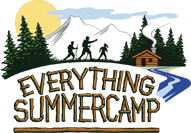Wow, Boys and Girls!
2021 sure took us all by surprise! We’ve had an unprecedented volume of orders to fulfill this season that we’ve had some difficulty keeping up. The demand to send kids off to camp came back with such a vengeance after the campless summer of 2020 and, along with the sudden and unseen challenges to acquire parts we need to construct our trunks, this season has certainly presented us with new trials to manage.
 We’re proud of our typical lead time of 2 business days (or up to 5 business days if your order contains camp-branded apparel), but we’ve unfortunately had to continuously push ahead our lead times for our Traditional Steel Trunks as well as our Designer Trunks as order volume and supply challenges began accumulating.
We’re proud of our typical lead time of 2 business days (or up to 5 business days if your order contains camp-branded apparel), but we’ve unfortunately had to continuously push ahead our lead times for our Traditional Steel Trunks as well as our Designer Trunks as order volume and supply challenges began accumulating.
Our lead time was roughly 30 days out just a handful of weeks back, but they’ve been slowly creeping back in the last few weeks. To get a delivery date for a trunk first add a trunk to your cart. Then, on the Shopping Cart page, use the Shipping Calculator. We keep these dates current and accurate.
We’ve resorted to selling some of the trunks that customers return to us. We take them in, replace any damages, and haul it straight into our Call Center. This way, when customers call to cancel their order because they know they won’t get their trunk in time, our reps in the Call Center can offer one of these reclaimed trunks which can ship out immediately!
Despite these difficulties and unusual methods we’ve had to implement, this season has certainly been one for the books! You’ve made it a great season for us and we hope we were able to meet your needs for summer camp. We’re very sorry if we were unable to fulfill your order in the time that you need, but we truly do appreciate your patience and understanding in these unprecedented times!
We’ll always strive to make our customers happy and do as much as we possibly can to get your order to you in time for your summer camp stay. Thank you for your understanding this season and we hope your summer is an awesome time regardless of whether you got a trunk or not. As always, thanks for reading!
- John


 of a helmet is pretty clear. That’s why the first helmets in history were for military purposes—doing battle was the main reason from centuries ago that anyone would need to wear head protection. Knights of the Medieval Ages wore their swinging visor helmets and all other types of models for the same reason.
of a helmet is pretty clear. That’s why the first helmets in history were for military purposes—doing battle was the main reason from centuries ago that anyone would need to wear head protection. Knights of the Medieval Ages wore their swinging visor helmets and all other types of models for the same reason.  then, though people did things all the time without a helmet for which you ought to be wearing one. From riding bicycles to climbing rocks, playing full-contact sports and riding horseback—people did it all without a helmet. Unfortunate spills and blows, however, would sometimes result in much worse consequences that could have been prevented with a helmet.
then, though people did things all the time without a helmet for which you ought to be wearing one. From riding bicycles to climbing rocks, playing full-contact sports and riding horseback—people did it all without a helmet. Unfortunate spills and blows, however, would sometimes result in much worse consequences that could have been prevented with a helmet. Pony Club asked the ASTM (American Society for Testing and Materials) to design a riding helmet made for equestrians. The first ASTM/SEI certified helmet was developed in 1990 just as helmet laws spread throughout the States and made helmets mandatory for riders on the road or under the age of 14.
Pony Club asked the ASTM (American Society for Testing and Materials) to design a riding helmet made for equestrians. The first ASTM/SEI certified helmet was developed in 1990 just as helmet laws spread throughout the States and made helmets mandatory for riders on the road or under the age of 14.
 modern sunglasses are even modeled after this style with bars running across each eye covering.
modern sunglasses are even modeled after this style with bars running across each eye covering. Here are some points about canoes that make them so great!
Here are some points about canoes that make them so great! Put yourself on 600 acres of a shaded land under a canopy of white pines, oak trees, maples, and ash trees to envision yourself at JCC (Jewish Community Center) Camp Chi. Wooded trails and a ravine perfect for hiking surround open fields for games and fun. Blass Lake provides a cool breeze during the day and picturesque sunsets each night.
Put yourself on 600 acres of a shaded land under a canopy of white pines, oak trees, maples, and ash trees to envision yourself at JCC (Jewish Community Center) Camp Chi. Wooded trails and a ravine perfect for hiking surround open fields for games and fun. Blass Lake provides a cool breeze during the day and picturesque sunsets each night.
